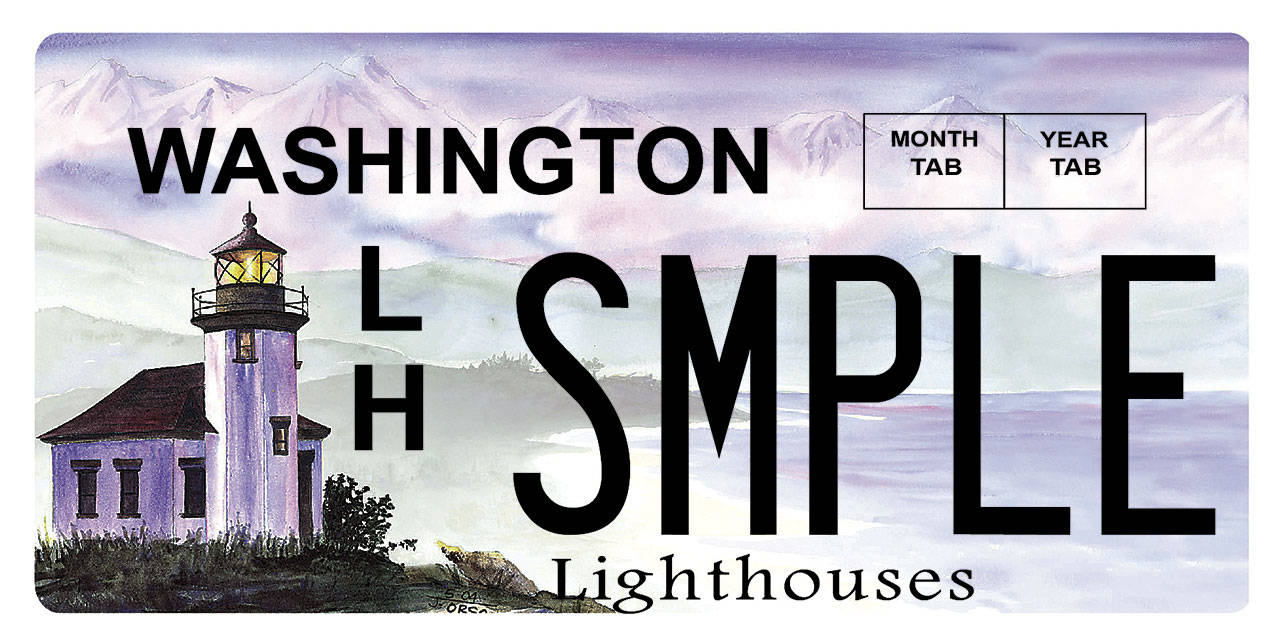Washington Lighthouse license plates have tipped the million-dollar mark in benefits for Island County and the state’s lighthouses, according to the nonprofit organization Lighthouse Environmental Programs.
The specialty license plates were created as a fundraising mechanism by the Washington Legislature in 2005 after an advocacy group from Whidbey Island launched the idea.
Money from the $40 license plates goes to help preserve 12 lighthouses around the state and toward Island County educational and environmental programs.
Coupeville artist Janet Orso designed the plate, based on one of her paintings of Admiralty Head Lighthouse.
Island County boasts about 500 cars, trucks, trailers, RVs and motorcycles displaying the special plate, making it the highest lighthouse plate count per 1,000 people, according to a press release.
Statewide, more than 3,400 vehicles display the lighthouse plate.
“We owe a huge thanks to islanders who have this plate because it truly is Whidbey’s plate and will always be that way,” said Rick Blank, president of Lighthouse Environmental Programs.
Local programs benefiting from the plate include Sound Water Stewards, Admiralty Head Lighthouse Docents, Admiralty Head Keepers, WSU Extension Waste Wise and Whidbey Watershed Stewards.
License plate proceeds also fund restoration and visitor programs at the state’s active lighthouses. Annual grants are given to volunteer lighthouse groups by the Lighthouse Environmental Programs that oversees funding.
Looking for a way to continue programs at Washington State University Extension of Island County, the lighthouse license idea was hatched more than 20 years ago.
It grew from the need to find more space and money for WSU Extension and the fact that Admiralty Head Lighthouse at Fort Casey State Park wasn’t open to the public because of budget cuts.
In exchange for use of the space in the lighthouse, WSU Extension assumed stewardship of the historic lighthouse and formed a docent program.
“Money to support all three programs was very hard to find and we needed another solution,” said Don Meehan, former director of WSU Extension.
Gloria Wahlin, then the coordinator of the WSU Docent Program, suggested following the lead of a successful license plate program in Montana that helped support Glacier Park Foundation.
“We didn’t know what we were setting in motion,” Meehan said in an interview. “I never imagined it would add up to a million dollars.”
• For information go to www.washingtonlight houses.org



